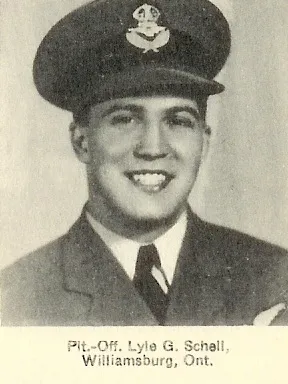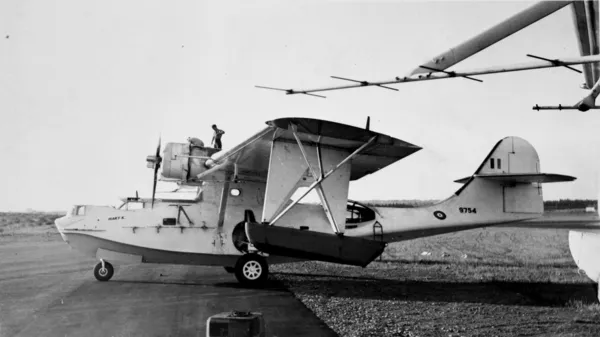240 Squadron. Catalina aircraft X 240 was damaged in baffle and flew into a hill on Yell Island. Six RAF members of the crew. Sergeants A.R. Breakspear, E. Henowy, S. Irvine, A.O. Pitcher, L.A. Rowe, and Flight Lieutenant H. Goolden were also killed. All seven crew members are buried in the same collective grave.
Addendum: Z 2148 was one of many aircraft in search of the Tirpitz off Norway. The aircraft flew from Northern Ireland to Northern Scotland to refuel before joining the search. On the evening of the 18th., the crew took off for the long patrol, soon running into sever icing and turbulence. Then, unusually for a Catalina, one of the engines failed. The aircraft was unable to maintain height, and the bomb load was jettisoned. The pilot then set course for the nearest flying boat base, Sullom Von. A signal was sent to Sullom Voe informing of the problem, and an estimated time of arrival given. The signal was received by the radio section, but for some reason, was not passed to flying control, which, unaware of the Catalina's difficulties, closed down for the night. At about 0100 hours, the Catalina arrived to find no reply to their calls, and no welcoming flare-path. After checking their position, the crew began to circle, continuing to make radio calls, which were eventually answered by Sumburgh staff, who in turn managed to alert Sullom Voe. It was a bitterly cold night with snow showers and pitch darkness. Men were ordered from their beds to man open boats and prepare the flare-path. To add to their discomfort, there was a change in wind direction, and the flare-path had to be changed. Meanwhile the Catalina was losing height and began to circle over the sea to the south of Feltar where it may have drifted into the Colgrave Sound. With neither of the pilots or the navigator familiar with Sullom Voe a landing on such a dark night would not be easy. Eventually, at about 0500 hours, news came that a partial flare-path had been laid, and that the Catalina could land if the pilot so wished. The aircraft reduced height and had just set course when the crew were blinded by a snowstorm. It is likely that the aircraft was then caught in a severe down-draught, striking the top of the Hill of Arisdale on Yell, causing a loss of control. The Catalina skidded across the ground, breaking up as it went. The co-pilot, Flying Officer Helme, was thrown through the windscreen, but was able to return to the blazing aircraft and pull clear two injured crew members before being driven back by the flames. After making the two men as comfortable as possible, he set out to find help. Detail provided by David E. Thompson, Stockton-on-Tees, England.


